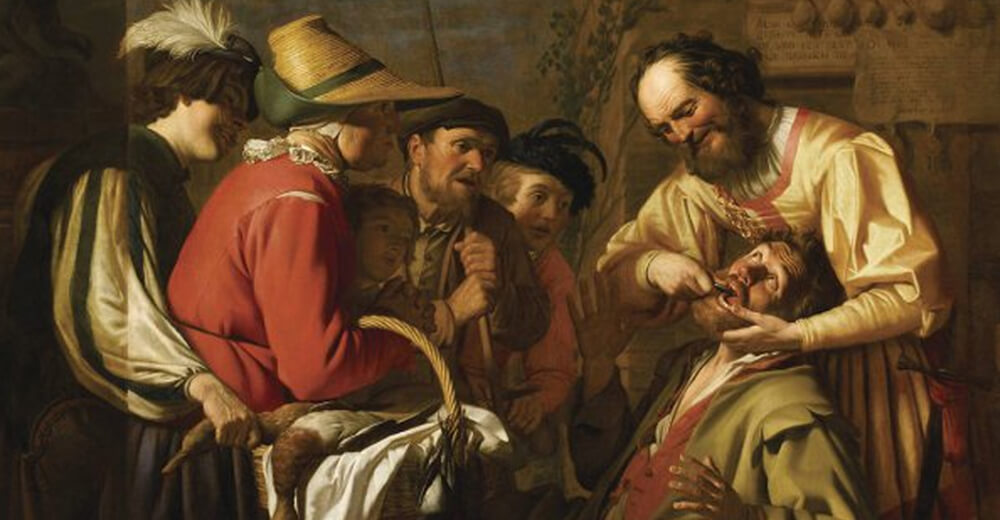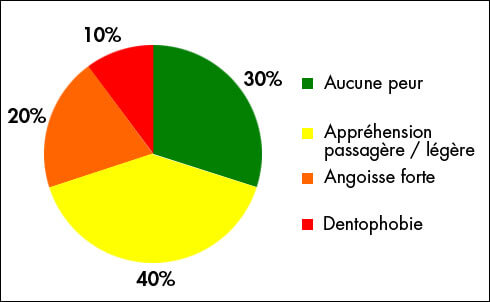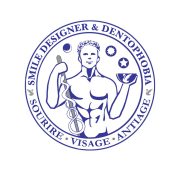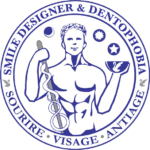Definition, generalities, origins
the symptoms
Dental phobia or "fear of the dentist
refers to the anxiety of dentistry in general
and in particular to receive dental care
DENTAL PHOBIA IS AN EXTREMELY INTENSE FEAR OF THE DENTIST
GENERAL DEFINITION OF A PHOBIA
In psychopathology the term phobia, from the ancient Greek phobos (φόβος), refers to a set of psychological sufferings.
When they take on the value of symptoms, they must be appreciated as a sign of psychological suffering.
In psychoanalysis, phobia cannot constitute an independent pathological process and this is why it is linked to anxiety hysteria.
The phobia of the dentist
The severe form of this fear of the dentist (specific dental phobia) is variously called odonto-phobia, dentophobia, stomatophobia, dental phobia. However, it has been suggested that the term "dental phobia" not be used for individuals who do not have excessive or unreasonable fears, but rather the term "fear of the dentist."The term dentophobia is reserved for people with an acute behavioral disorder as a result of post-traumatic stress caused by previous dental or other experiences. This is a widespread phenomenon.
General information on the fear of the dentist or dentophobia or stomatophobia
Approximately 5 to 10% of American adults have experienced dental phobia, otherwise known as dento-phobia or stomato-phobia (official source).
One can easily imagine as much or even worse elsewhere given that the medical level in the USA is one of the best in the world.
The lack of epidemiological studies in Europe makes it impossible to apply these figures with certainty to this region of the world. However, it would be logical, given the historically lower level of medicalization in these regions and the fact that access to the most modern equipment was delayed compared to the United States, that these figures should be equivalent or even much higher.
The psychological trauma of dental care provided by dentists on the European population is rooted in the popular collective unconscious.
While the acceptance of sedation protocols for dentists is very recent in France, the Equimolecular Mixture Oxygen Nitrous Oxide – MEOPA – a gaseous mixture used in anesthesia and discovered in 1772 by Joseph Priestley, was used as early as 1844 by the dentist Horace Wells in the USA It has been in common use on this continent by dentists for a very long time
It is therefore logical to think that on this new American continent of fears, with advanced protocols and equipment, the psychological impact of the painfulness of dental care was less than in the rest of the world!
And yet it exists for one person out of ten on average… so what about the old European continent concerning the fear and phobia of the dentist?
This lack of care for dentophobic patients or those who are simply afraid of the dentist is a great prejudice for these patients.
The absence of dental offices adapted to their psychological blockages leads to medical wandering, a lack of care and associalization of these patients, not to mention the excruciating recurrent pain that these patients inflict on themselves rather than going to see a doctor.
From dental anxiety to dental phobia
The fear of the dentist or dentophobia is the over-amplification of the natural apprehension of dental pain.
Airplane phobia represents the hyper-amplification of the natural feeling of apprehension that everyone feels when taking off. Dentophobia is the same for dental care.
In the dental office, it goes without saying that the sensations are not very pleasant, even if the pain is abolished by local dental anesthetics. But the hyper-amplification of these sensations leads to the perception of these discomforts as intense suffering, most often through fantasized anticipation.
In all cases, phobic subjects are aware of the irrationality of their fear, and suffer from it.
Most individuals suffering from phobia tend to flee from the object They can also, when they are forced to meet him, arrange to be accompanied by a “counter-phobic” object that reassures them: for example, a gri-gri, a box of medicines or a trusted person.
Exposure to the phobic stimulus (dental care) almost invariably elicits an immediate anxiety response, which may take the form of either a situation-related panic attack or a predisposition to such an attack.
Note: In children, anxiety may be expressed by crying, bad temper, rigidity, or clinging.
The person admits that the fear is excessive or unreasonable.
Note: In children, this characteristic may be absent.
Photogenic situations are avoided, or are endured with intense anxiety or distress.
Avoidance, anxious anticipation or distress in the feared situation interferes significantly with the person’s normal daily life, with his or her professional (or school) functioning, with his or her activities and social relationships.
The fact that today’s dentist no longer ” hurts ” is not of much help to those affected by this phenomenon, who are often not taken seriously and are subject to ridicule…


THE SYMPTOMS OF THIS FEAR
The characteristics of the phobia of the dentist or dentophobia or stomatophobia.
Symptoms related to dental phobia or fear of the dentist can vary from person to person.
Main symptoms:
Here are the main symptoms noted during dental treatments at the dentist on people with dental phobia:
– Insomnia the night before the appointment,
– Acceleration of the heartbeat (Tachycardia),
– Excessive sweating ,
– Hearts up,
– Trembling,
– Hyperventilation,
– Nausea reflex at the dentist (nausea).
Note that recurrent incoercible nausea at the dentist is often a symptomatic variant of fear of the dentist, especially in men.
In extreme cases, a panic attack can be observed with general malaise, sensation of imminent death, tachycardia, sweating, even fainting, etc.
The refusal to go to the dentist due to this apprehension can have catastrophic consequences on dental hygiene as well as on the general physical and psychological state of the patient.
People with dental phobia are so afraid of receiving dental treatment that they avoid dental care regardless of the consequences, even if painful.
Indeed, many people refuse dental care even if they have a dental emergency, such as an abscess in an acute phase.
People who are very afraid of dental care often have an “avoidance cycle,” in which they avoid dental care until they experience a serious dental emergency requiring invasive and often painful treatment, which can reinforce their fear of the dentist.
The percentage of frequency in the population of the fear of the dentist
In most cases, people have a slight fear of the dentist, i.e. temporary apprehensions or anxieties that do not prevent them from having a check-up or even regular dental treatment.
Concerning the real phobia of the dentist, it is frequent in about one person out of ten.
Women tend to report more fear than men.
Younger patients tend to report being more fearful than older people.
Patients tend to report being more fearful of more invasive procedures, such as oral surgery, than less invasive treatments, such as professional dental cleanings or prophylaxis, which seems logical.




